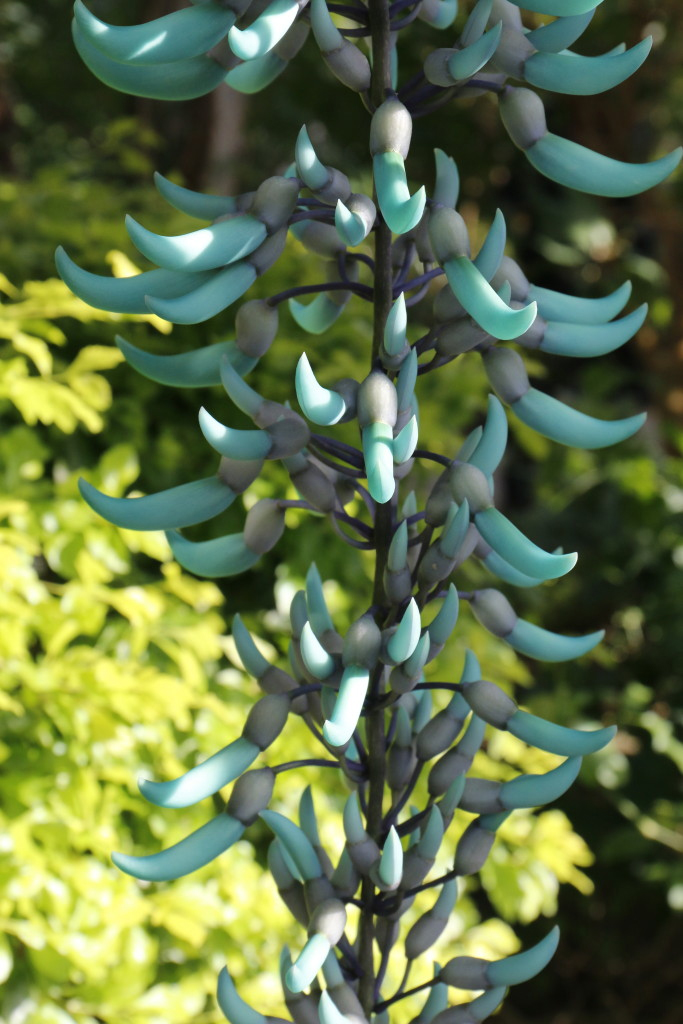ヒスイカズラ( jade vine )

ヒスイカズラはフィリピンのルソン島、ミンドロ島、カタンドゥアネス島の雨林や小川のそばなどの樹木に絡みつきます。森林の伐採により自生のものは全滅寸前です。植物の中では珍しい翡翠色の花をつけます。直径約6cm、総状花序は3mになることもあります。コウモリが蜜を貰うために花にぶら下がると雄しべ、雌しべがあらわれ、その際に花粉がオオコウモリの頭につき、違う株の花粉を運ぶ役をします。共進化の分かりやすい例です。当館ではコウモリの助けがなく、約20年前にコウモリの活動時間に人工受粉を行いました。果実は長さ12cm、種子は8個はいっていました。人工下で種子をつけるにはまさにバットマン(bat man)が必要です。栄養繁殖になりますが、一応さし芽でも増殖が可能です。
Strongylodon macrobotrys is known as jade vine (common name), due to its striking blue-green flowers. It is native to Luzon, Mindoro and Catanduanes Island in Philippine. The destruction of rainforests in these areas threatens this species in the wild. It grows in the damp forests and along the streams. Flower is up to 6cm across and pseudoraceme is up to 3m long. The flowers show modifications associated with pollination by bats. The bats hang upside down to sample jade vine’s nectar, and the plant gently brushes pollen onto the bat’s head while it drinks. The next plant the bat visits collects the pollen from the first before brushing its own pollen to be transported elsewhere. It is a great example of co-evolution in action. The plant and the bat have evolved to work perfectly in cooperation with each other. In the greenhouse visiting bats is not expected, so hand pollinating is necessary. Another way of propagation is by cutting.






